Black And Decker DS321 Handleiding
Black And Decker
Slijpmachine
DS321
Bekijk gratis de handleiding van Black And Decker DS321 (6 pagina’s), behorend tot de categorie Slijpmachine. Deze gids werd als nuttig beoordeeld door 36 mensen en kreeg gemiddeld 4.6 sterren uit 18.5 reviews. Heb je een vraag over Black And Decker DS321 of wil je andere gebruikers van dit product iets vragen? Stel een vraag
Pagina 1/6

General Safety Rules
WARNING: Read and understand all instructions. Failure to follow all instructions listed
below may result in electric shock, fire and/or serious personal injury.
SAVE THESE INSTRUCTIONS
Work Area
•Keep your work area clean and well lit. Cluttered benches and dark areas invite
accidents.
• Do not operate power tools in explosive atmospheres, such as in the presence of
flammable liquids, gases, or dust. Power tools create sparks which may ignite the dust or
fumes. Use in well ventilated areas only.
• Keep bystanders, children, and visitors away while operating a power tool.
Distractions can cause you to lose control.
Electrical Safety
• Double insulated tools are equipped with a polarized plug (one blade is wider than the
other.) This plug will fit in a polarized outlet only one way. If the plug does not fit fully
in the outlet, reverse the plug. If it still does not fit, contact a qualified electrician to
install a polarized outlet. Do not change the plug in any way. Double insulation
eliminates the need for the three wire grounded power cord and grounded power supply
system.
• Avoid body contact with grounded surfaces such as pipes, radiators, ranges and
refrigerators. There is an increased risk of electric shock if your body is grounded.
•Don’t expose power tools to rain or wet conditions. Water entering a power tool will
increase the risk of electric shock.
• Do not abuse the cord. Never use the cord to carry the tools or pull the plug from an
outlet. Keep cord away from heat, oil, sharp edges or moving parts. Replace damaged
cords immediately. Damaged cords increase the risk of electric shock.
• When operating a power tool outside, use an outdoor extension cord marked "W-A"
or "W." These cords are rated for outdoor use and reduce the risk of electric shock.
Personal Safety
• Stay alert, watch what you are doing and use common sense when operating a power
tool. Do not use tool while tired or under the influence of drugs, alcohol, or
medication. A moment of inattention while operating power tools may result in serious
personal injury.
• Dress properly. Do not wear loose clothing or jewelry. Contain long hair. Keep your
hair, clothing, and gloves away from moving parts. Loose clothing, jewelry, or long hair
can be caught in moving parts. Air vents cover moving parts and should be avoided.
• Avoid accidental starting. Be sure switch is off before plugging in. Carrying tools with
your finger on the switch or plugging in tools that have the switch on invites accidents.
• Remove adjusting keys or wrenches before turning the tool on. A wrench or key that is
left attached to a rotating part of the tool may result in personal injury.
•Do not overreach. Keep proper footing and balance at all times. Proper footing and
balance enables better control of the tool in unexpected situations.
•Use safety equipment. Always wear eye protection. Dust mask, non-skid safety shoes,
hard hat, or hearing protection must be used for appropriate conditions.
Tool Use and Care
• Use clamps or other practical way to secure and support the workpiece to a stable
platform. Holding the work by hand or against your body is unstable and may lead to loss
of control.
•Do not force tool. Use the correct tool for your application. The correct tool will do the
job better and safer at the rate for which it is designed.
•Do not use tool if switch does not turn it on or off. Any tool that cannot be controlled
with the switch is dangerous and must be repaired.
• Disconnect the plug from the power source before making any adjustments,
changing accessories, or storing the tool. Such preventative safety measures reduce
the risk of starting the tool accidentally.
• Store idle tools out of reach of children and other untrained persons. Tools are
dangerous in the hands of untrained users.
• Maintain tools with care. Keep cutting tools sharp and clean. Properly maintained
tools, with sharp cutting edges are less likely to bind and are easier to control.
• Check for misalignment or binding of moving parts, breakage of parts, and any other
condition that may affect the tools operation. If damaged, have the tool serviced
before using. Many accidents are caused by poorly maintained tools.
• Use only accessories that are recommended by the manufacturer for your model.
Accessories that may be suitable for one tool, may become hazardous when used on
another tool.
Service
•Tool service must be performed only by qualified repair personnel. Service or
maintenance performed by unqualified personnel could result in a risk of injury.
• When servicing a tool, use only identical replacement parts. Follow instructions in
the Maintenance section of this manual. Use of unauthorized parts or failure to follow
Maintenance Instructions may create a risk of electric shock or injury.
Specific Safety Rules
• Hold tool by insulated gripping surfaces when performing an operation where the
cutting tool may contact hidden wiring or its own cord. Contact with a "live" wire will
make exposed metal parts of the tool "live" and shock the operator.
• Use clamps or another practical way to secure and support the work piece to a
stable platform. Holding the work by hand or against your body leaves it unstable and
may lead to loss of control.
WARNING: Some dust created by power sanding, sawing, grinding, drilling, and
other construction activities contains chemicals known to cause cancer, birth defects
or other reproductive harm. Some examples of these chemicals are:
• lead from lead-based paints,
• crystalline silica from bricks and cement and other masonry products, and
• arsenic and chromium from chemically-treated lumber. (CCA)
Your risk from these exposures varies, depending on how often you do this type of work. To
reduce your exposure to these chemicals: work in a well ventilated area, and work with
approved safety equipment, such as those dust masks that are specially designed to filter out
microscopic particles.
• Avoid prolonged contact with dust from power sanding, sawing, grinding, drilling, and
other construction activities. Wear protective clothing and wash exposed areas with
soap and water. Allowing dust to get into your mouth, eyes, or lay on the skin may promote
absorption of harmful chemicals.
WARNING: Use of this tool can generate and/or disburse dust, which may cause
serious and permanent respiratory or other injury. Always use NIOSH/OSHA approved
respiratory protection appropriate for the dust exposure. Direct particles away from face and
body. CAUTION: Wear appropriate hearing protection during use. Under some conditions
and duration of use, noise from this product may contribute to hearing loss.
SAFETY GUIDELINES - DEFINITIONS
It is important for you to read and understand this manual.
The information it contains relates to protecting YOUR
SAFETY and PREVENTING PROBLEMS. The symbols below are used to help you recog-
nize this information.
DANGER: Indicates an imminently hazardous situation which, if not avoided, will result
in death or serious injury.
WARNING: Indicates a potentially hazardous situation which, if not avoided, could
result in death or serious injury.
CAUTION: Indicates a potentially hazardous situation which, if not avoided, may result
in minor or moderate injury.
CAUTION: Used without the safety alert symbol indicates a potentially hazardous situation
which, if not avoided, may result in property damage.
VEA EL ESPAÑOL EN LA CONTRAPORTADA.
SAVE THIS MANUAL FOR FUTURE REFERENCE.
INSTRUCTIVO DE OPERACIÓN, CENTROS DE SERVICIO
Y PÓLIZA DE GARANTÍA. LÉASE ESTEADVERTENCIA:
INSTRUCTIVO ANTES DE USAR EL PRODUCTO.
Catalog No. DS321 Form No. 90519293 (APR. ‘07)
Copyright © 2007 Black & Decker Printed in China
INSTRUCTION MANUAL
Catalog Number DS321
3
3
3
3
33
3
3
3
3
33 '
'
'
'
''
'
'
'
'
'' '
'
'
'
''
'
'
'
'
''
x
x
x
x
xx
x
x
x
x
xx
2
2
2
2
22
2
2
2
2
22 1
1
1
1
11
1
1
1
1
11 '
'
'
'
''
'
'
'
'
'' '
'
'
'
''
'
'
'
'
'' (
(
(
(
((
(
(
(
(
((7
7
7
7
77
7
7
7
7
775
5
5
5
55
5
5
5
5
55
x
x
x
x
xx
x
x
x
x
xx
5
5
5
5
55
5
5
5
5
553
3
3
3
33
3
3
3
3
333
3
3
3
33
3
3
3
3
33m
m
m
m
mm
m
m
m
m
mmm
m
m
m
mm
m
m
m
m
mm)
)
)
)
))
)
)
)
)
)) B
B
B
B
BB
B
B
B
B
BB E
E
E
E
EE
E
E
E
E
EE L
L
L
L
LL
L
L
L
L
LLT
T
T
T
TT
T
T
T
T
TT
S
S
S
S
SS
S
S
S
S
SS A
A
A
A
AA
A
A
A
A
AA N
N
N
N
NN
N
N
N
N
NN D
D
D
D
DD
D
D
D
D
DD E
E
E
E
EE
E
E
E
E
EE R
R
R
R
RR
R
R
R
R
RR
KEY
KEY INFORMA
INFORMATION
TION YOU
YOU SHOULD
SHOULD KNOW
KNOW:
:
• Always start your belt sander before it is in contact with the workpiece and
do not switch it off until after it has been lifted from the workpiece.
• Always hold your belt sander with two hands.
6
2
34
5
78
11A
about 7/64” (2.7mm) to
13/64” (5.1mm)
BEFORE RETURNING THIS PRODUCT
FOR ANY REASON PLEASE CALL
1-800-544-6986
BEFORE YOU CALL, HAVE THE FOLLOWING INFORMATION AVAILABLE, CATALOG No., TYPE No., AND
DATE CODE . IN MOST CASES, ABLACK & DECKER REPRESENTATIVE CAN RESOLVE THE PROBLEM
OVER THE PHONE. IF YOU HAVE ASUGGESTION OR COMMENT, GIVE US ACALL. YOUR FEEDBACK IS
VITALTO BLACK & DECKER.
T
THANK
HANK YOU
YOU FOR
FOR CHOOSING
CHOOSING B
BLACK
LACK &
&D
DECKER
ECKER!
!
G
GO
OT
TO
OWWW
WWW.B
.BLACKAND
LACKANDD
DECKER
ECKER.
.COM
COM/N
/NEW
EWO
OWNER
WNER
T
TO
OREGISTER
REGISTER YOUR
YOUR NEW
NEW PRODUCT
PRODUCT.
.

Pull the lever shown in to release the tension on the sanding belt. Pull the sandingFigure 5
belt from the two rollers. Put the new 3” x 21” (75 x 533mm) sanding belt in position on the
front and rear rollers ( ). Ensure that the arrows on the sanding belt and on your beltFigure 6
sander are pointing in the same direction. Push the lever to the rear to tension the sanding
belt. WARNING: To
reduce the risk of injury
, make sure belt is installed with arrows in
proper direction of rotation. Failure to do this could result in the belt unraveling creating a
hazardous condition.
Dust Collection - Figure 7
WARNING: To prevent accidental operation, turn off and unplug sander before
installing the dust bag.
When using your belt sander, dust and grit are produced. It is important to use a dust bag.
Connect the dust bag by sliding the plastic opening of the bag down over the dust exhaust
port of the sander as shown in . To empty the dust bag, remove it from the sanderFigure 7
and unzip the bag over a trash container.
Note: A vacuum cleaner attachment is available as a service part at extra cost. To find your
nearest Black & Decker Service Center location, refer to the yellow pages directory under
"Tools—Electric" or call: 1-800-54-HOW-TO (544-6986).
WARNING: Fire hazard. Collected sanding dust from sanding surface coatings
(polyurethane, linseed oil, etc.) can self-ignite in sander dust bag or elsewhere and
cause fire. To reduce risk, empty bag frequently and strictly follow sander manual and
coating manufacturer's instructions.
WARNING: Fire hazard. When sanding wood that could contain nails or when
sanding metal surfaces, do not use the dust bag or a vacuum cleaner because sparks
are generated. Wear safety glasses and a dust mask. Due to the danger of fire, do not
use your belt sander to sand magnesium surfaces. Do not use for wet sanding.
Operation
Using Your Belt Sander - Figure 8
Always hold belt sander firmly with both hands while sanding as shown in . NoteFigure 8
that sander bail handle can be adjusted to three different positions as previously discussed.
Inversion Stand - An inversion stand is available for this belt sander from your nearest Black
& Decker service center as service part number 478700-00. The inversion stand allows the
belt sander to be used like a small stationary sander for horizontal sanding.
Sanding Frame - A sanding frame as service part number 478705-00. A sanding frame
allows for smooth even sanding without gouging.
If you need assistance in locating either of the above service parts, please call 1-800-54-
HOW-TO (544-6986).
Inversion Stand Warnings:
WARNING: Severe abrasion hazard.
• Avoid contacting the rotating belt on the inversion stand with fingers or hands.
• Never use the belt sander in an inverted position without the inversion stand specifically
designed for this product.
• Be sure the belt sander is turned off and not attached to a power source while attaching to
inversion stand. Before re-connecting the tool, depress and release the trigger switch to
ensure that the tool is off.
• When sanding with the belt sander in the inversion stand, hold wood or material being
sanded firmly during operation. The belt may pull the material away from you resulting in
injury.
Switch - Figure 9 & 10
To start your belt sander, depress the on/off switch as shown in . To stop your beltFigure 9
sander release the on/off switch. For continuous operation, depress the on/off switch then
depress the lock-on button ( ) and release the on/off switch. To stop your beltFigure 10
sander, depress the on/off switch to release the lock-on button. Release the on/off switch.
Handy Hints
• Always start your belt sander before it is in contact with the workpiece and do not switch it
off until after it has been lifted from the workpiece.
• Always hold your belt sander with two hands.
• Where possible, clamp the workpiece to a work bench or similar sturdy surface.
• Use the correct grit sanding belt for your application. The following is a suggested list of
belt grits to use with different materials.
MATERIAL BELT GRIT
Solid Wood 80
Veneer 150
Chipboard 60/80
Plastics 100
Steel 80 (remove dust bag)
Paint Removal 40/60
Balsa Wood 100
Acrylic 100
Tool Care And Maintenance
Never apply excessive force when you use your belt sander. Too much force can result in an
overload and cause damage to the motor or the workpiece. If your belt sander becomes too
hot, operate it without load for 2 minutes. Always keep the air cooling vents clear. To clean
your belt sander, proceed as follows:
WARNING: To prevent accidental operation, turn off and unplug sander before
performing the following operations. Failure to do this could result in serious
personal injury.
• Use a clean dry paint brush to clear vents and ducts.
• Clean the housings using a clean damp cloth (do not use solvents, gas or turpentine.)
IMPORTANT: To assure product SAFETY and RELIABILITY, repairs, maintenance and
adjustment should be performed by authorized service centers or other qualified service
personnel, always using identical replacement parts.
TROUBLESHOOTING
Problem Possible Cause Possible Solution
• Unit will not start. • Cord not plugged in. • Plug tool into a working
outlet.
• Circuit fuse is blown. • Replace circuit fuse.
(If the product repeatedly
causes the circuit fuse to
blow, discontinue use
immediately and have it
serviced at a Black &
Decker service center or
authorized servicer.)
• Circuit breaker is tripped. • Reset circuit breaker.
(If the product repeatedly
causes the circuit breaker
to trip, discontinue use
immediately and have it
serviced at a Black &
Decker service center or
authorized servicer.)
• Cord or switch is damaged. • Have cord or switch
replaced at Black &
Decker Service Center or
Authorized Servicer.
For assistance with your product, visit our website www.blackanddecker.com for the loca-
tion of the service center nearest you or call the BLACK & DECKER help line at
1-800-544-6986.
Accessories
Use only 3” x 21” (75 x 533mm) sanding belts. Recommended accessories for use with your
tool are available at extra cost from your local dealer or authorized service center. If you
need assistance in locating any accessory for your tool, please call 1-800-54-HOW-TO
(544-6986).
CAUTION: The use of any other accessory not recommended for use with this tool could
be hazardous.
The label on your tool may include the following symbols.
V................volts A ............amperes
Hz..............hertz W............watts
min ............minutes alternating current
..........direct current n o ..........no load speed
............ Class II Construction
..........
earthing terminal
..............safety alert symbol .../min ........revolutions or
reciprocations per minute
Safety Warnings and Instructions: Sanders
•ALWAYS WEAR EYE AND RESPIRATORY PROTECTION.
• Clean your tool out periodically.
Other Important Safety Warnings and Instructions
Sanding
Lead Base Paint Sanding of lead based paint is NOT RECOMMENDED due to the difficulty of controlling the
contaminated dust. The greatest danger of lead poisoning is to children and pregnant women.
Since it is difficult to identify whether or not a paint contains lead without a chemical
analysis, we recommend the following precautions when sanding any paint:
Personal Safety
• No children or pregnant women should enter the work area where the paint sanding is
being done until all clean up is completed.
• A dust mask or respirator should be worn by all persons entering the work area. The filter
should be replaced daily or whenever the wearer has difficulty breathing.
NOTE: Only those dust masks suitable for working with lead paint dust and fumes should
be used. Ordinary painting masks do not offer this protection. See your local hardware
dealer for the proper (NIOSH approved) mask.
• NO EATING, DRINKING or SMOKING should be done in the work area to prevent
ingesting contaminated paint particles. Workers should wash and clean up BEFORE
eating, drinking or smoking. Articles of food, drink, or smoking should not be left in the work
area where dust would settle on them.
Environmental Safety
• Paint should be removed in such a manner as to minimize the amount of dust generated.
• Areas where paint removal is occurring should be sealed with plastic sheeting of 4 mils
thickness.
• Sanding should be done in a manner to reduce tracking of paint dust outside the work area.
Cleaning And Disposal
• All surfaces in the work area should be vacuumed and thoroughly cleaned daily for the
duration of the sanding project. Vacuum filter bags should be changed frequently.
• Plastic drop cloths should be gathered up and disposed of along with any dust chips or
other removal debris. They should be placed in sealed refuse receptacles and disposed of
through regular trash pick-up procedures. During clean up, children and pregnant women
should be kept away from the immediate work area.
• All toys, washable furniture and utensils used by children should be washed thoroughly
before being used again.
Motor
Be sure your power supply agrees with nameplate marking. 120 Volts AC only means your
tool will operate on standard 60 Hz household power. Do not operate AC tools on DC. A
rating of 120 volts AC/DC means that your tool will operate on standard 60 Hz AC or DC
power. This information is printed on the nameplate. Lower voltage will cause loss of power
and can result in over-heating. All Black & Decker tools are factory-tested; if this tool does
not operate, check the power supply.
Use of Extension Cords
Make sure the extension cord is in good condition before using. Always use the proper size
extension cords with the tool – that is, proper wire size for various lengths of cord and heavy
enough to carry the current the tool will draw. Use of an undersized cord will cause a drop in
line voltage resulting in loss of power and overheating. For proper size cords see chart
below.
SAVE THESE INSTRUCTIONS
Adjustments
WARNING: To prevent accidental operation, turn off and unplug sander before
performing the following operations. Failure to do this could result in serious
personal injury.
3 Position Handle - Figure 1 & 1A
A locking mechanism on the side of the handle can be loosened to allow the handle to
move. To adjust the handle, pull out on the locking arm ( ) and move the handle toFigure 1
the desired position ( ). Once the handle is in position, push the locking arm in toFigure 1A
lock the handle into position.
2 Position Belt Cover - Figure 2 & 3
The belt sander has an aluminum sanding belt cover at the front. When the handle is
positioned in the uppermost position, this cover can be raised as shown in Figure 2
(Arrow 1) and locked in this position to:
a.) Improve accessibility to narrow areas.
b.) Allow the use of the smaller diameter front roller to sand with (normally the aluminum
cover prevents this when in the “down” position).
c.) Expose the top part of the belt for more versatile sanding (Figure 3).
To lower the belt cover, grasp the flange on the side and move it slightly in the
direction shown in Figure 2 (Arrow 2) and return it to its closed position.
Note: The sanding belt cover cannot be locked in its raised position unless the bail handle is
in the uppermost position.
WARNING: The sanding belt is exposed when the belt cover is raised. Use extra
caution when operating in this mode.
Adjusting The Sanding Belt Tracking - Figure 4
Turn the machine upside down ( ), hold it firmly with one hand, start motor andFigure 4
release switch immediately after observing tracking of sanding belt. If abrasive belt runs
outward, turn tracking adjustment knob clockwise and counterclockwise if belt runs inward.
Belt life will be greatly increased by keeping the tracking adjustment set properly. To prevent
the sanding belt from rubbing against the sander housing, keep the edge of the belt about
7/64” (2.7mm) to 13/64” (5.1mm) from the housing as shown in figure 4.
Changing The Sanding Belt - Figure 5 & 6
WARNING: To prevent accidental operation, turn off and unplug sander before
changing the sanding belt.
910
Minimum Gage for Cord Sets
Volts Total Length of Cord in Feet
120V 0-25 26-50 51-100 101-150
(0-7,6m) (7,6-15,2m) (15,2-30,4m) (30,4-45,7m)
240V 0-50 51-100 101-200 201-300
(0-15,2m) (15,2-30,4m) (30,4-60,9m) (60,9-91,4m)
Ampere Rating
More Not more American Wire Gage
Than Than
0 - 6 18 16 16 14
6 - 10 18 16 14 12
10 - 12 16 16 14 12
12 - 16 14 12 Not Recommended

RÈGLES DE SÉCURITÉ CONCERNANT LES OUTILS À
PILE – GÉNÉRALITÉS
AVERTISSEMENT : Lire, comprendre et suivre toutes les directives précisées
ci-dessous, y compris les consignes de sécurité, afin d’éviter les risques de choc
électrique, d’incendie ou de blessure grave.
CONSERVER LE PRÉSENT GUIDE À TITRE DE RÉFÉRENCE
Aire de travail
• L’aire de travail doit être propre et bien éclairée. Les établis encombrés et les endroits
sombres peuvent entraîner des accidents.
• Ne pas faire fonctionner des outils électriques dans des atmosphères explosives,
comme en présence de liquides, de gaz et de poussières inflammables. Les outils
électriques produisent des étincelles qui peuvent enflammer la poussière ou les vapeurs.
• Tenir les enfants, les visiteurs ou toute autre personne à l’écart lorsqu’on utilise un
outil électrique; les distractions peuvent faire perdre la maîtrise de ce dernier.
Mesures de sécurité – Électricité
• Les outils à double isolation comportent une fiche polarisée (une lame plus large que
l'autre). La fiche n'entre que d'une façon dans une prise polarisée. Lorsque la fiche
n'entre pas à fond dans la prise, essayer de nouveau après avoir inversé les broches
de la fiche. Si la fiche n'entre toujours pas dans la prise, communiquer avec un
électricien certifié afin de faire installer une prise polarisée. Ne modifier en aucune
façon la fiche. La double isolation élimine le besoin d'un cordon trifilaire mis à la terre et
d'un système d'alimentation mis à la terre.
• Éviter de toucher à des surfaces mises à la terre comme des tuyaux, des radiateurs,
des cuisinières et des réfrigérateurs. Les risques de secousses électriques sont plus
élevés si le corps de l'utilisateur est mis à la terre.
• Protéger les outils électriques de la pluie ou des conditions mouillées. Une infiltration
d'eau dans l'outil augmente les risques de secousses électriques.
• Manipuler le cordon avec soin. Ne jamais se servir du cordon afin de transporter
l'outil ni tirer sur le cordon pour débrancher l'outil. Éloigner le cordon des sources de
chaleur, des flaques d'huile, des arêtes tranchantes et des pièces mobiles.
Remplacer immédiatement les cordons endommagés. Les cordons endommagés
augmentent les risques de secousses électriques.
• Lorsqu'on utilise un outil électrique à l'extérieur, se servir d'un cordon de rallonge
prévu pour l'extérieur, portant la mention "W-A" ou "W". Ces cordons sont conçus pour
servir à l'extérieur et minimisent les risques de secousses électriques.
Sécurité personnelle
• Rester vigilant en tout temps et faire preuve de jugement lorsqu’on utilise un outil
électrique; ne pas utiliser l’outil lorsqu’on est fatigué ou sous l’influence de
drogues, d’alcool ou de médicaments, car un moment d’inattention pourrait entraîner
des blessures graves.
• Porter des vêtements appropriés. Ne pas porter des vêtements amples ou des
bijoux. Couvrir ou attacher les cheveux longs. Garder les cheveux, les vêtements, les
bijoux et les gants éloignés des pièces mobiles, car ceux-ci peuvent s’y coincer. Se tenir
éloigné des évents puisque ces derniers pourraient camoufler des pièces mobiles.
• Éviter les démarrages accidentels; s’assurer que l’interrupteur est en position
d’arrêt avant de brancher l’outil. Ne pas transporter l’outil en laissant le doigt sur
l’interrupteur ni le brancher lorsque l’interrupteur est en position de marche, car cela pourrait
causer un accident.
• Retirer les clés de réglage avant de démarrer l’outil. Une clé laissée sur une pièce
rotative pourrait entraîner des blessures.
• Ne pas trop étendre les bras; les pieds doivent rester ancrés fermement au sol afin
de maintenir son équilibre en tout temps et de mieux maîtriser l’outil dans des situations
imprévues.
• Utiliser le matériel de sécurité approprié; toujours porter des lunettes de protection.
Porter un masque anti-poussières, des chaussures antidérapantes, un casque de sécurité
ou des protecteurs auditifs lorsque la situation le requiert.
Utilisation et entretien de l’outil
• Fixer et soutenir la pièce sur une plate-forme stable au moyen d’une bride de serrage
ou de tout autre dispositif semblable. La pièce est instable lorsqu’on la retient manuellement
ou qu’on l’appuie contre le corps, ce qui pourrait faire perdre la maîtrise de l’outil.
• Ne pas forcer l’outil ni l’utiliser pour des travaux autres que ceux pour lesquels il a
été conçu. Pour obtenir de meilleurs résultats et prévenir les risques de blessure, laisser
l’outil couper à la vitesse pour laquelle il a été conçu.
• Ne pas utiliser l’outil lorsque l’interrupteur marche-arrêt ne fonctionne pas. Tout outil
qui ne peut être commandé au moyen de l’interrupteur est dangereux et doit être réparé.
• Déconnecter le bloc-piles de l'outil ou placer l'interrupteur en position d'arrêt ou de
verrouillage avant d'effectuer tout réglage, changement d'accessoires, ou de ranger
l'outil. Ces mesures de sécurité préventives réduisent les risques de démarrage accidentel.
• Lorsqu’on n’utilise pas l’outil, le ranger hors de la portée des enfants ou des personnes
non qualifiées. Les outils sont dangereux entre les mains de personnes inexpérimentées.
• Lorsqu’on n’utilise pas le bloc-piles, le ranger à l’écart des objets métalliques tels
que les trombones, les pièces de monnaie, les clés, les clous, les vis ou autres petits
objets susceptibles de conduire l’électricité entre les bornes et d’occasionner ainsi
un court-circuit pouvant provoquer des étincelles, des brûlures ou un incendie.
• Bien entretenir l’outil; s’assurer qu’il est toujours bien propre et aiguisé. Les outils
bien entretenus et dont les bords sont bien tranchants sont moins susceptibles de rester
coincés et sont plus faciles à maîtriser.
• Vérifier les pièces mobiles afin de s’assurer qu’elles sont bien alignées et qu’elles
ne restent pas coincées. Vérifier également les pièces afin de s’assurer qu’il n’y a
aucun bris ni aucune autre condition susceptible de nuire au bon fonctionnement de
l’outil. Faire réparer l’outil si ce dernier est endommagé avant de s’en servir à
nouveau, car les accidents sont souvent causés par des outils mal entretenus.
• N’utiliser que les accessoires recommandés par le fabricant pour le modèle concerné.
Un accessoire destiné à un outil particulier peut devenir dangereux lorsqu’il est utilisé avec
un autre.
Entretien
• L’outil doit être entretenu par le personnel qualifié seulement; toute maintenance
effectuée par une personne non qualifiée pourrait entraîner des risques de blessure.
• Lors de l’entretien, n’utiliser que des pièces de rechange identiques et suivre les
directives précisées à la section « Entretien » du présent guide afin de prévenir les
risques de choc électrique ou de blessure.
Consignes de sécurité particulières
• Tenir l’outil par les surfaces isolées prévues à cette fin lorsqu’il risque d’entrer en
contact avec des fils cachés ou le cordon, car de tels contacts peuvent mettre les pièces
métalliques de l’outil sous tension, engendrant des risques de choc électrique.
• Utiliser des brides de fixation ou un autre dispositif de fixation permettant de fixer
solidement et de soutenir la pièce sur une plateforme stable. Tenir la pièce avec la
main ou contre son corps la rend instable et risque de provoquer une perte de maîtrise de
l’outil.
AVERTISSEMENT : Certains outils électriques, tels que les sableuses, les scies,
les meules, les perceuses ou certains autres outils de construction, peuvent
produire de la poussière contenant des produits chimiques susceptibles d’entraîner
le cancer, des malformations congénitales ou pouvant être nocifs pour le système
reproductif. Parmi ces produits chimiques, on retrouve :
• le plomb dans les peintures à base de plomb,
• la silice cristalline dans les briques et le ciment et autres produits de maçonnerie,
• l’arsenic et le chrome dans le bois de sciage ayant subi un traitement chimique
(comme l’arséniate de cuivre et de chrome).
Le risque associé à de telles expositions varie selon la fréquence avec laquelle on effectue
ces travaux. Pour réduire l’exposition à de tels produits, il faut travailler dans un endroit
bien aéré et utiliser le matériel de sécurité approprié, tel un masque anti-pous
sières spécialement conçu pour filtrer les particules microscopiques.
• Éviter tout contact prolongé avec la poussière soulevée par cet outil ou autres outils
électriques. Porter des vêtements de protection et nettoyer les parties exposées du
corps à l’eau savonneuse. S’assurer de bien se protéger afin d’éviter d’absorber par la
bouche, les yeux ou la peau des produits chimiques nocifs.
AVERTISSEMENT : Cet outil peut produire et répandre de la poussière susceptible
de causer des dommages sérieux et permanents au système respiratoire. Toujours
utiliser un appareil respiratoire anti-poussières approprié approuvé par le NIOSH ou l’OSHA.
Diriger les particules dans le sens opposé du visage et du corps.
MISE EN GARDE : Porter un appareil de protection personnel anti-bruit approprié
durant l’utilisation. Sous certaines conditions et pendant toute la durée de l’utilisation, le
bruit émanant de ce produit pourrait contribuer à la perte d’audition.
LIGNES DIRECTRICES EN MATIÈRE DE SÉCURITÉ - DÉFINITIONS
Il est important que vous lisiez et compreniez ce mode d’emploi. Les informations qu’il con-
tient concernent VOTRE SÉCURITÉ et visent à ÉVITER TOUT PROBLÈME. Les symboles
ci-dessous servent à vous aider à reconnaître cette information.
DANGER : Indique une situation dangereuse imminente qui, si elle n’est pas évitée, causera
la mort ou des graves blessures.
AVERTISSEMENT : Indique une situation potentiellement
dangereuse qui, si elle n’est pas évitée, pourrait causer la mort ou de graves blessures.
MISE EN GARDE : Indique une situation potentiellement dangereuse qui, si elle n’est pas
évitée, pourrait causer des blessures mineures ou modérées.
MISE EN GARDE : Utilisé sans le symbole d’alerte à la sécurité, indique une situation poten-
tiellement dangereuse qui, si elle n’est pas évitée, peut résulter en des dommages à la propriété.
L’étiquette apposée sur l’outil peut afficher les symboles suivants.
V ....................................volts A..........................ampères
Hz ..................................hertz W ........................watts
min..................................minutes ......................courant alternatif
..............................courant continu n o ........................aucune option à vide
....................................construction de classe II
......................
borne de terre
..................................symbole d´avertissement .../min................... tours ou
mouvements alternatifs par minute
Mesures de sécurité : Ponceuses
• TOUJOURS PORTER DES LUNETTES DE PROTECTION ET UN APPAREIL
RESPIRATOIRE ANTIPOUSSIÈRE PENDANT LE PONÇAGE.
• Nettoyer l’outil régulièrement.
Autres mesures de sécurité importantes
Ponçage
Peinture à base de plomb
IL N’EST PAS RECOMMANDÉ de poncer de la peinture à base de plomb puisqu’il est
difficile d’en maîtriser la poussière contaminée. Ce genre de ponçage présente de sérieux
risques d’empoisonnement au plomb pour les femmes enceintes et les enfants.
Puisqu’il est difficile de déterminer si la peinture renferme du plomb sans en faire une
analyse chimique, il est conseillé de se conformer aux mesures suivantes lors du ponçage
de tout type de peinture.
Sécurité personnelle
• Ne laisser aucun enfant ni aucune femme enceinte entrer dans la pièce où il y a ponçage
de peinture jusqu’à ce que la pièce soit nettoyée.
• Toute personne qui entre dans l’aire de travail doit porter un masque anti-poussière ou un
appareil respiratoire; le filtre doit être remplacé chaque jour ou lorsque la respiration
devient difficile REMARQUE : seuls les masques qui protègent contre les poussières et les émanations de
plomb doivent être utilisés, car les masques ordinaires n’offrent pas la protection voulue.
Consulter le quincaillier local pour obtenir un masque approuvé par le NIOSH (National
Institute of Occupational Health and Safety).
Service Information
Black & Decker offers a full network of company-owned and authorized service locations
throughout North America. All Black & Decker Service Centers are staffed with trained
personnel to provide customers with efficient and reliable power tool service.
Whether you need technical advice, repair, or genuine factory replacement parts, contact the
Black & Decker location nearest you. To find your local service location, refer to the yellow
pages directory under "Tools—Electric" or call: 1-800-54-HOW-TO (544-6986).
Full Two-Year Home Use Warranty
Black & Decker (U.S.) Inc. warrants this product for two years against any defects in material
or workmanship. The defective product will be replaced or repaired at no charge in either of
two ways.
The first, which will result in exchanges only, is to return the product to the retailer from
whom it was purchased (provided that the store is a participating retailer). Returns should be
made within the time period of the retailer’s policy for exchanges (usually 30 to 90 days after
the sale). Proof of purchase may be required. Please check with the retailer for their specific
return policy regarding returns that are beyond the time set for exchanges.
The second option is to take or send the product (prepaid) to a Black & Decker owned or
authorized Service Center for repair or replacement at our option. Proof of purchase may be
required. Black & Decker owned and authorized Service Centers are listed under "Tools-
Electric" in the yellow pages of the phone directory.
This warranty does not apply to accessories. This warranty gives you specific legal rights
and you may have other rights which vary from state to state. Should you have any
questions, contact the manager of your nearest Black & Decker Service Center. This product
is not intended for commercial use.
FREE WARNING LABEL REPLACEMENT: If your warning labels become illegible or are
missing, call 1-800-544-6986 for a free replacement.
See ‘Tools-Electric’
– Yellow Pages –
for Service & Sales
Black & Decker (U.S.) Inc.,
701 E. Joppa Rd.
Towson, MD 21286 U.S.A.
P
P
P
P
PP
P
P
P
P
PPO
O
O
O
OO
O
O
O
O
OON
N
N
N
NN
N
N
N
N
NNC
C
C
C
CC
C
C
C
C
CCE
E
E
E
EE
E
E
E
E
EEU
U
U
U
UU
U
U
U
U
UUS
S
S
S
SS
S
S
S
S
SSE
E
E
E
EE
E
E
E
E
EE
À
À
À
À
ÀÀ
À
À
À
À
ÀÀ
C
C
C
C
CC
C
C
C
C
CCO
O
O
O
OO
O
O
O
O
OOU
U
U
U
UU
U
U
U
U
UUR
R
R
R
RR
R
R
R
R
RRR
R
R
R
RR
R
R
R
R
RRO
O
O
O
OO
O
O
O
O
OOI
I
I
I
II
I
I
I
I
IIE
E
E
E
EE
E
E
E
E
EE
D
D
D
D
DD
D
D
D
D
DDE
E
E
E
EE
E
E
E
E
EE
7
7
7
7
77
7
7
7
7
775
5
5
5
55
5
5
5
5
55
M
M
M
M
MM
M
M
M
M
MMM
M
M
M
MM
M
M
M
M
MM S
S
S
S
SS
S
S
S
S
SSU
U
U
U
UU
U
U
U
U
UUR
R
R
R
RR
R
R
R
R
RR 5
5
5
5
55
5
5
5
5
553
3
3
3
33
3
3
3
3
333
3
3
3
33
3
3
3
3
33
M
M
M
M
MM
M
M
M
M
MMM
M
M
M
MM
M
M
M
M
MM (
(
(
(
((
(
(
(
(
(( 3
3
3
3
33
3
3
3
3
33
P
P
P
P
PP
P
P
P
P
PPO
O
O
O
OO
O
O
O
O
OO S
S
S
S
SS
S
S
S
S
SSU
U
U
U
UU
U
U
U
U
UUR
R
R
R
RR
R
R
R
R
RR 2
2
2
2
22
2
2
2
2
221
1
1
1
11
1
1
1
1
11
P
P
P
P
PP
P
P
P
P
PPO
O
O
O
OO
O
O
O
O
OO)
)
)
)
))
)
)
)
)
))
IMPORTANTS RENSEIGNEMENTS :
• Toujours soulever la ponceuse de la surface à poncer avant de la mettre en
marche et de l’arrêter.
• Toujours tenir la ponceuse avec les deux mains.
N° de catalogue DS321
MODE D’EMPLOI
CONSERVER CE MANUEL POUR UN USAGE ULTÉRIEUR.
AVANT DE RETOURNER CE PRODUIT POUR QUELQUE
RAISON QUE CE SOIT, COMPOSER LE
1-800-544-6986
AVANT D’APPELER, AYEZ EN MAIN LE N° DE CATALOGUE ET LE CODE DE DATE. DANS LAPLUPART DES
CAS, UN REPRÉSENTANT DE BLACK & DECKER PEUT RÉSOUDRE LE PROBLÈME PAR
TÉLÉPHONE. SI VOUS AVEZ UNE SUGGESTION OU UN COMMENTAIRE, APPELEZ-NOUS. VOS
IMPRESSIONS SONT CRUCIALES POUR BLACK & DECKER.
M
MERCI
ERCI D
D’
’A
AVOIR
VOIR CHOISI
CHOISI B
BLACK
LACK & D
& DECKER
ECKER !
!
V
VISITEZ
ISITEZ WWW
WWW.B
.BLACKAND
LACKANDD
DECKER
ECKER.
.COM
COM/N
/N EW
EWO
OWNER
WNER
POUR
POUR ENREGISTRER
ENREGISTRER VOTRE
VOTRE NOUVEAU
NOUVEAU PRODUIT
PRODUIT.
.
Product specificaties
| Merk: | Black And Decker |
| Categorie: | Slijpmachine |
| Model: | DS321 |
Heb je hulp nodig?
Als je hulp nodig hebt met Black And Decker DS321 stel dan hieronder een vraag en andere gebruikers zullen je antwoorden
Handleiding Slijpmachine Black And Decker

26 Augustus 2024

18 Juni 2024

8 Juni 2023

27 Mei 2023

24 Mei 2023

19 Mei 2023

12 Mei 2023

10 Mei 2023

9 April 2023

4 April 2023
Handleiding Slijpmachine
- Eibenstock
- Holzmann
- Yato
- McKenzie
- SW-Stahl
- Steren
- Victoria Arduino
- Profitec
- Maktec
- Einhell Bavaria
- Parkside
- Bunn
- AEG
- Dremel
- Gude Pro
Nieuwste handleidingen voor Slijpmachine
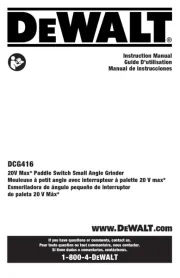
29 Juli 2025
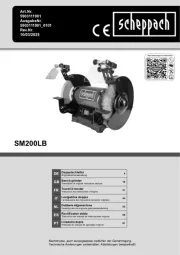
21 Juli 2025
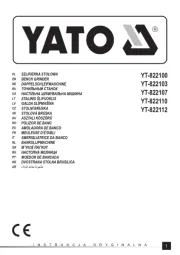
15 Juli 2025
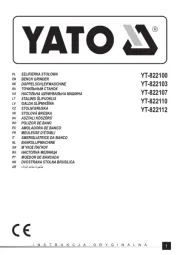
15 Juli 2025
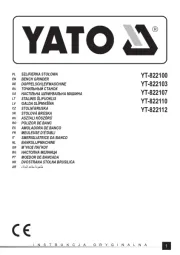
15 Juli 2025
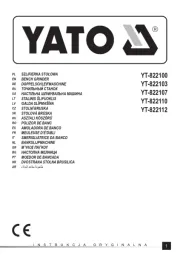
15 Juli 2025
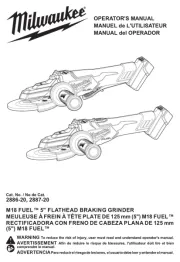
14 Juli 2025
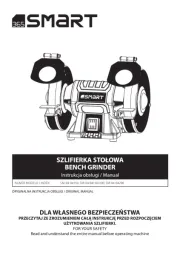
14 Juli 2025
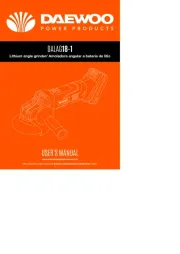
5 Juli 2025

5 Juli 2025